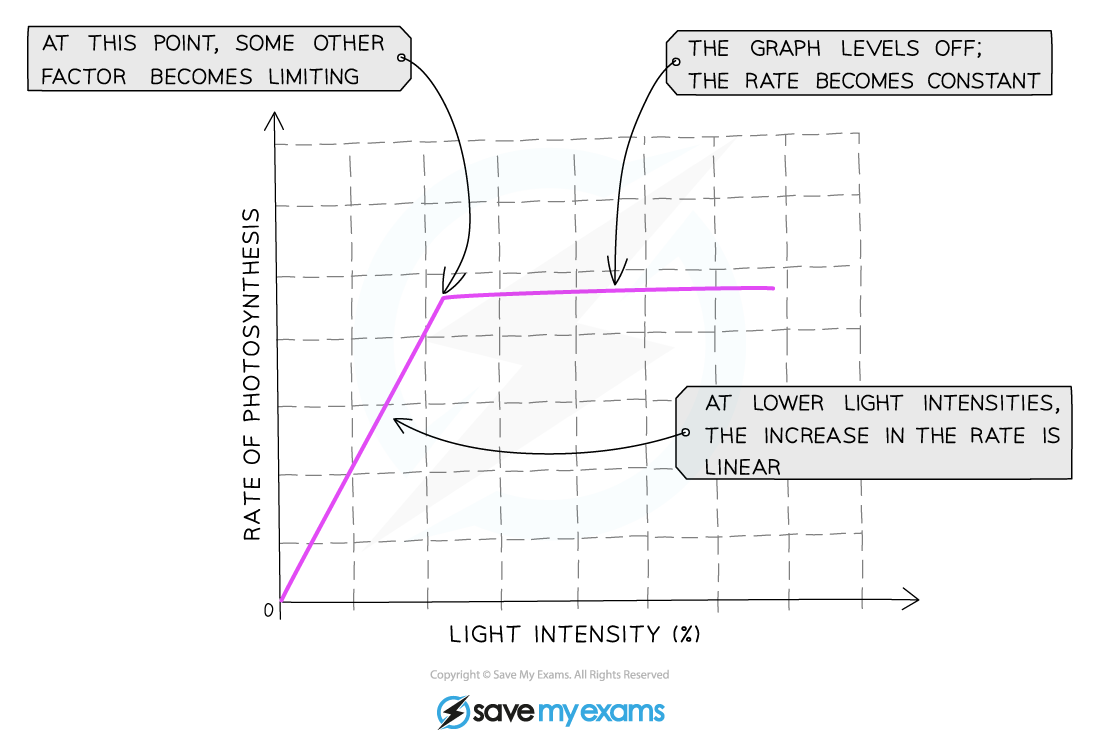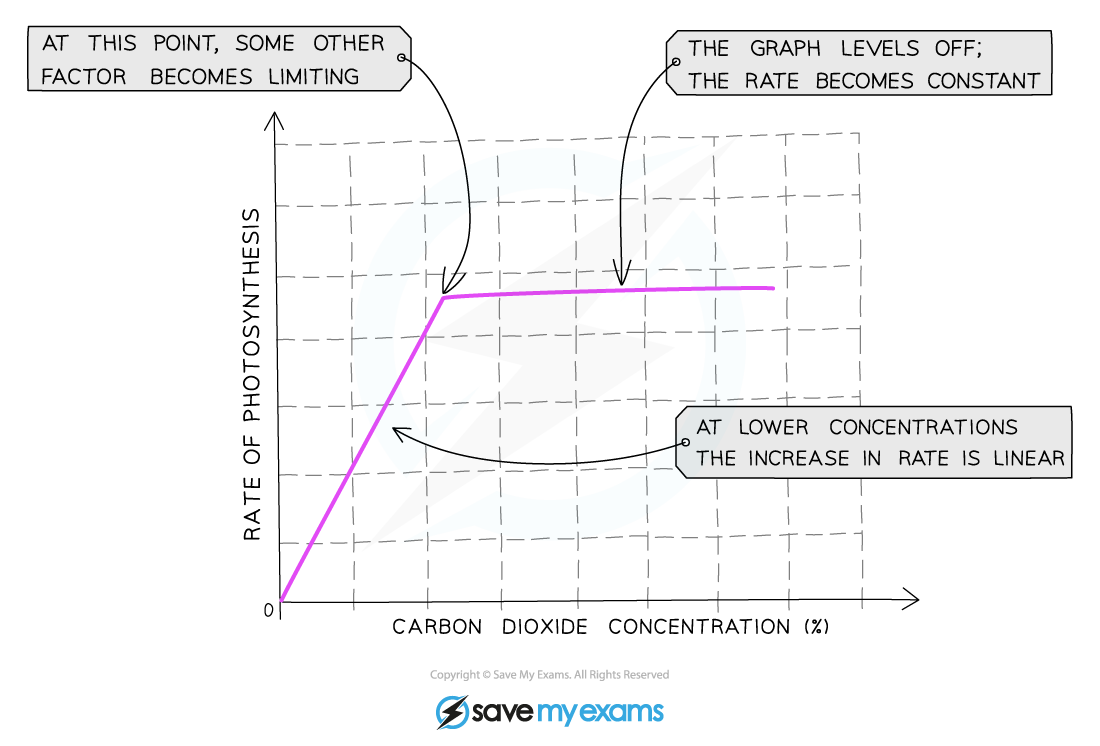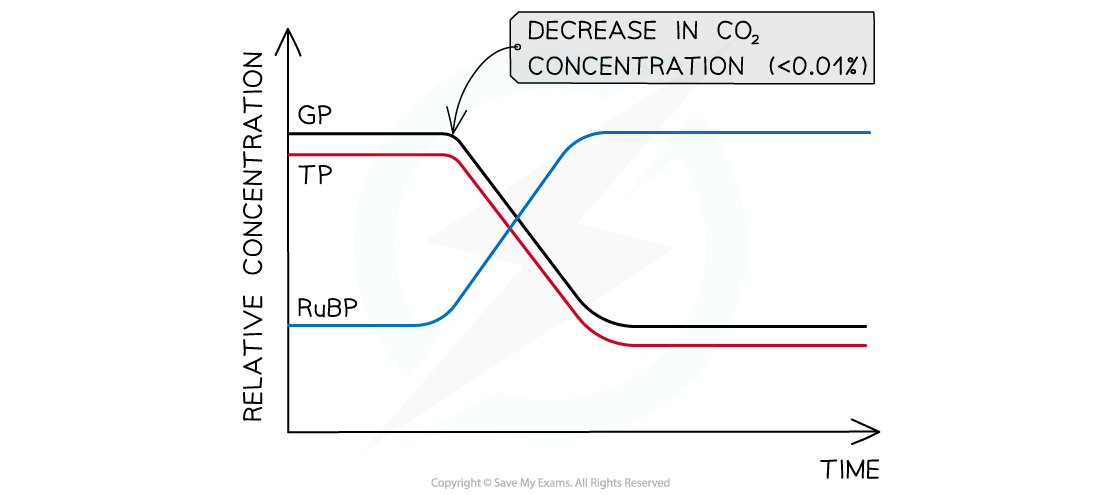Limiting Factors of Photosynthesis (AQA A Level Biology): Revision Note
Exam code: 7402
Factors that limit the rate of photosynthesis
In order to carry out photosynthesis at the highest possible rate, plants need a constant supply of reactants, as well as suitable environmental conditions
If conditions are not ideal then the rate of photosynthesis will be limited
The main environmental factors that can limit the rate of photosynthesis are:
light intensity
carbon dioxide concentration
temperature
These are known as limiting factors of photosynthesis
If any one of these factors is below the optimum level for the plant, the rate of photosynthesis will be reduced, even if the other two factors are at their optimum
Light intensity
The rate of photosynthesis increases as light intensity increases:
At high light intensity more electrons undergo photoionisation and more ATP NADPH are produced
The Calvin cycle can progress at a faster rate and more organic compounds can be produced
If light intensity continues to increase, the rate of photosynthesis will eventually level off, or reach a plateau
At this point light intensity is no longer a limiting factor, and another factor is limiting the rate of photosynthesis, e.g. temperature or carbon dioxide concentration

Worked Example
The graph below shows the effect of reducing light intensity on some of the products of photosynthesis.

Explain the effect of reduced light intensity on levels of GP, RuBP and TP.
[2]
Answer:
Reduction in ATP AND NADPH/reduced NAD from the light-dependent reactions; [1 mark]
GP cannot be converted into triose phosphate SO GP builds up / triose phosphate cannot be converted into RuBP; [1 mark]
Examiner Tips and Tricks
Always refer to the limiting factor of light as light intensity; never just state 'light' as a limiting factor.
Carbon dioxide concentration
The rate of photosynthesis increases as carbon dioxide concentration increases:
When more CO2 is present, more can combine with RuBP during carbon fixation
More GP will be produced, which can be converted into triose phosphate and then into organic compounds
This trend will continue until another factor becomes limiting

Worked Example
The graph below shows the effect of reducing carbon dioxide concentration on some of the products of photosynthesis.

Explain the effect of reduced carbon dioxide concentration on levels of GP, RuBP and TP.
[2]
Answer:
Carbon dioxide does not combine with RuBP; [1 mark]
RuBP is not converted into GP SO RuBP builds up / GP cannot be converted into triose phosphate; [1 mark]
Examiner Tips and Tricks
Always refer to carbon dioxide concentration, and never the 'amount' of carbon dioxide, or just 'carbon dioxide' alone.
Temperature
The rate of photosynthesis increases as temperature increases
Photosynthesis is an enzyme-controlled reaction, so an increase in kinetic energy will increase reaction rate
Examples of enzymes in photosynthesis include:
rubisco
ATP synthase
This trend continues up to a certain temperature, beyond which enzymes begin to denature and the rate of reaction decreases
For most metabolic reactions, temperature has a large effect on reaction rate
For photosynthesis, temperature has no significant effect on the light-dependent reactions, as these are driven by energy from light rather than the kinetic energy of the reacting molecules

Temperature can also impact rate of photosynthesis for other reasons, e.g.:
increasing temperature causes stomata on the leaf to close in order to reduce water loss; this reduced gas exchange and so influence availability of CO2
the light-dependent reaction relies on a proton gradient forming across the thylakoid membrane; changes in temperature may affect the permeability of the thylakoid membrane
Agricultural practices and limiting factors
An understanding of the effect of limiting factors on photosynthesis can be used to increase crop yields in controlled environments, such as glasshouses
In the most sophisticated glasshouses sensors can be used to monitor light intensity, humidity and carbon dioxide concentration
All these factors can be managed by a computer and their levels adjusted to ensure the crop can photosynthesis at the highest rate
Farmers have to find a balance between crop yield and the cost of maintaining 24-hour lighting and year-round heating
Examiner Tips and Tricks
When dealing with data on limiting factors, you should always take careful note of the command word used:
describe questions only require statements that describe data, e.g. “rate increases and then plateaus”
explain questions require an explanation as to why a particular pattern has emerged
Explaining in describe questions will be a waste of time (and vice versa) and you will lose marks if a question asks you to do one, and you only do the other.

Unlock more, it's free!
Did this page help you?